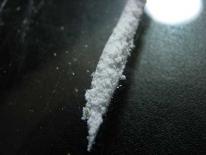
Methamphetamine is a drug that is being abused more and more these days, which has the healthcare professionals alarmed. Along with drug abuse comes fractured families and a lot of pain. What can you do if you’re addicted to meth? What are the best types of treatments available for such an addiction? Today we will discuss the reality of meth abuse along with some statistics.
Many substance abuse professionals are alarmed. With its harmful effects not only affecting addicts, but entire families as well, both healthcare professionals and law enforcement are doing all they can to get meth users the help that they need.

The rate of methamphetamine users in the United States is increasing.
Methamphetamine is a drug used medically as a central nervous system stimulant and can be legally prescribed in minute doses. This drug is odorless, bitter tasting and white in color. It can be taken via oral ingestion, injection, snorting or sniffing the powder. It may also be heated and then smoked, which is harmful to the body. It is popularly referred to as crystal, meth, speed, chalk, ice or glass.
Methamphetamine use became rampant after the Second World War and its use has continued to increase. Previously, it was manufactured in super labs that were less efficient and did not produce refined meth, as is the case today.
Methamphetamine users normally experience sensations of pleasure and an increased heart rate, which increases high blood pressure levels. Users may also experience heightened energy levels and increased alertness. Methamphetamine is also known to suppress users’ appetite and enhance sexual arousal. Other users may also report talkativeness, sleeplessness, teeth grinding, compulsive behavior such as skin picking, and increased body temperature.
Long term users of methamphetamine should expect the following symptoms:
1. Dental problems.
This normally presents in the form of ‘meth mouth’. This entails tooth decay and gum problems as a result of continuous abuse of this drug. Meth has a serious drying effect on the mouth that may cause mouth sores.
2. Skin problems.
Users of this drug normally have a grey or yellowish colored skin. They may also sweat profusely as a result of overexertion and dehydration.
3. Nasal and breathing problems.
Meth users generally experience drying out of the mucous membranes in the body. Nose bleeding is common. They may also experience smoker’s coughs and chronic bronchitis.
Long term abuse can also result into diminished levels of dopamine and other neurotransmitters, which makes the user crave for more of this drug so as to raise dopamine levels. In as much as it raises libido, this drug can also cause impotence.
According to statistics from the Substance Abuse and Mental Health Services Administration, almost 12 million people in the United States above 12 years have abused methamphetamine in at least one instance in their lifetime. The rate of admissions for cases related to methamphetamine abuse rose from 13 to 56 admissions in every 100,000 people from 1993.
Analysis has shown that methamphetamine use is more prevalent in men having sex with men (MSM) than in the rest of the population. The increase in methamphetamine use began in the early 90s in Western United States, and by the 2000s, it had become a nationwide problem. The rates of methamphetamine use is generally high in the states lying on the Western United States, including Wyoming, California, Montana and Nevada.
Methamphetamine users should stop using the drug and seek treatment immediately.
Treatment entails detoxification and rehab, and this varies depending on the level of the drug use. During treatment you will be able to receive individual and perhaps group counseling in order to contend with any underlying issues. You’ll also be able to learn a bit about the disease of addiction and learn coping skills that you can employ in your everyday life.
Should you have an addiction to methamphetamine or any other drug, please reach out for help. You do not have to struggle with addiction any longer. Call your local rehab or see your healthcare provider for some assistance in finding your first step toward recovery.
Image: Flickr